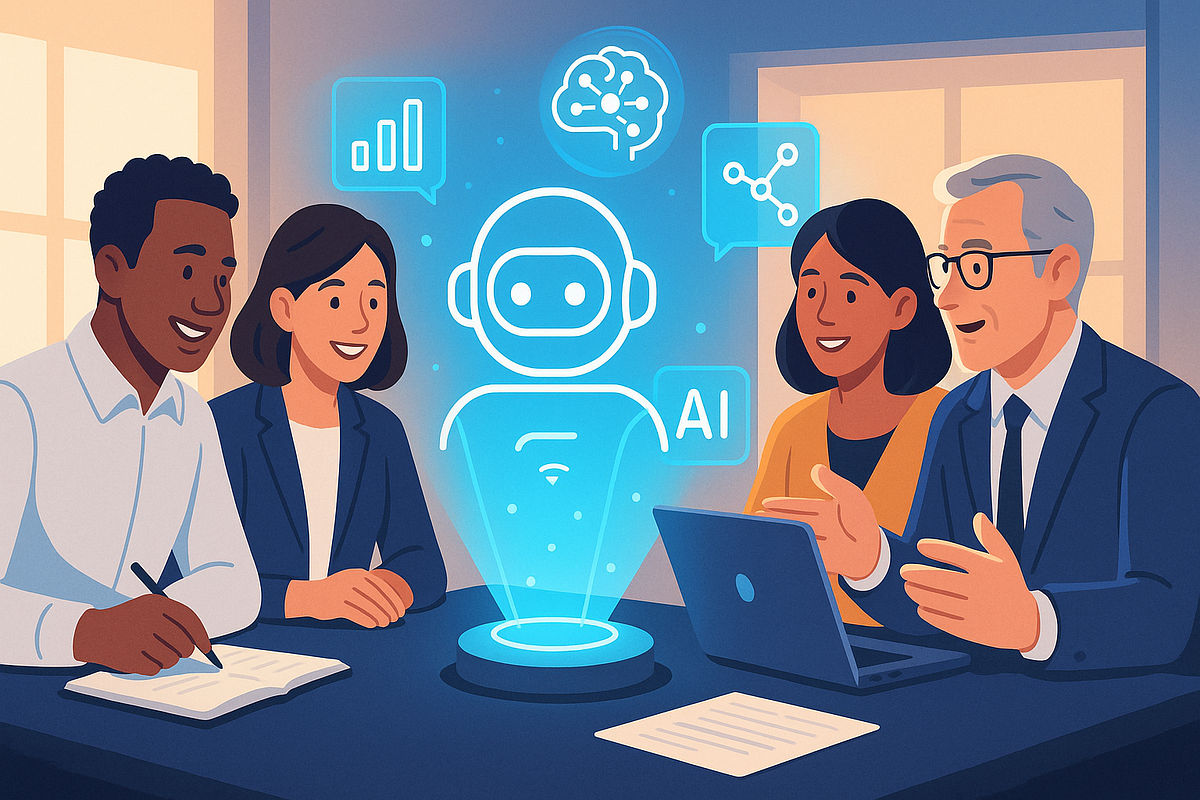- First AI Movers
- Posts
- Happiness as a Side Effect: How Daily AI Knowledge Sharing for Executives Fuels Purpose‐Driven AI Leadership
Happiness as a Side Effect: How Daily AI Knowledge Sharing for Executives Fuels Purpose‐Driven AI Leadership
Discover why happiness emerges from purpose-driven AI leadership, not chasing it directly. Evidence-based strategies for executives. Start today 🎯
The simple truth: happiness emerges not from chasing it, but from doing work that lights you up—like helping thousands of professionals decode AI's complexity each day.

Photo by Ricardo Moura on Unsplash
TL;DR
You don’t get happier by chasing happiness directly. You get happier by doing meaningful work that engages your skills and helps others. For me — that’s researching, curating, and teaching AI to 4,000+ business leaders daily through First AI Movers. The science shows that:
social pressure to “be happy” can undermine well‑being,
flow and meaningful work drive satisfaction and resilience, and
helping others — including sharing AI know‑how — boosts connection and purpose.
The simple truth
Happiness isn’t something you pursue like a KPI — it’s a byproduct of meaningful activity. When I structure my day around AI research, synthesis, and teaching — the core of purpose‑driven AI leadership — my average happiness rises because I’m creating value for others. Research supports this: cross‑national work finds that pressure to feel happy correlates with lower well‑being, especially in countries that rank high on the World Happiness Index — e.g., the Netherlands — where the negative association is almost twice as strong as in lower‑ranking nations.
Key idea: Happiness is a side effect of work that engages your deepest skills and values — not the result of chasing happiness itself.
Flow, not FOMO
Psychologist Mihály Csíkszentmihályi showed that durable satisfaction comes from flow: total absorption in a challenging activity with clear goals and immediate feedback — conditions that match how I research, analyze, and teach AI daily. Flow’s core ingredients—goal clarity, feedback, and a challenge–skill match—map directly to the way I build each First AI Movers briefing.
Recent longitudinal evidence shows that flow predicts well‑being over time (not just in the moment), with psychological resilience acting as a mediator.
Why teaching others multiplies fulfillment
My mission — helping companies implement AI correctly — isn’t only altruistic; it’s psychologically sound. A 2023 peer‑reviewed study finds that meaningful work, feeling appreciated, and enjoying daily tasks significantly predict happiness at work and reduce turnover intentions. The lesson for executives: aligning roles with purpose is a high‑leverage move for both well‑being and retention.
Under the lens of Self‑Determination Theory, we thrive when work satisfies three basic psychological needs: competence, autonomy, and relatedness. Creating and sharing AI playbooks checks all three: I deepen mastery (competence), choose how to frame insights (autonomy), and build a community of practice (relatedness).
How my current happiness adds up (yes, literally)
Using a simple 1–10 scale for my core daily activities:
AI research & analysis — 9/10
Writing the daily newsletter — 8/10
Executive consulting on AI transformation — 10/10
Community building with First AI Movers — 8/10
Learning new AI developments — 9/10
Average happiness score: 8.8/10. Compared with many traditional corporate roles that anecdotally average 3–5/10, the activity mix alone creates a substantial advantage in day‑to‑day well‑being. Note: This is illustrative, not a clinical measure.
Why AI knowledge sharing for executives is perfect for flow
Complete involvement: Deep dives into emerging AI capabilities, constraints, and enterprise risks demand — and reward — focus.
Clear goals: Every brief aims to inform, de‑risk, and enable action for leaders.
Immediate feedback: Reader replies, subscriber growth, and client outcomes offer fast signals.
Challenge–skill balance: AI evolves at a rapid pace, stretching me while leveraging over 25 years of experience in tech.
Intrinsic motivation: I’d do this even without the revenue because the learning loops and impact are inherently satisfying.
From individual joy to organizational impact
The compound effects are real. One executive who implements AI responsibly can influence an entire organization; one well-timed newsletter can de-risk AI deployment for hundreds of teams.
Empirically, AI adoption can promote employee knowledge sharing by expanding learning opportunities — especially under paradoxical (both/and) leadership and among technophile employees. For leaders, modeling open, evidence‑based AI knowledge sharing creates positive feedback loops across functions.
Complementary work also links AI, knowledge sharing, and organizational performance. The message for the C‑suite: pair tooling with culture and leadership behaviors that reward learning and sharing.
The happiness equation (and a call to action)
I didn’t “find” happiness; I designed a system — one that combines research, synthesis, teaching, and community — that produces it as a byproduct of helping others navigate AI complexity. The literature on flow, meaningful work, and self‑determination predicts exactly this pattern. If you’re an executive aiming for purpose‑driven AI leadership, start small:
Ship one beneficial AI note a day to your team (pattern: problem → principle → practice).
Instrument feedback loops (what got used? what changed?).
Reward sharing and learning, not just output.
That’s how you build a culture where happiness — and performance — arrive as side effects of meaningful, compounding work.
Further reading
Looking for more great writing in your inbox? 👉 Discover the newsletters busy professionals love to read.
Hi, my name is Dr. Hernani Costa, Founder of First AI Movers. For inquiries and partnerships, contact me at info at firstaimovers dot com; or message me on LinkedIn.







Reply